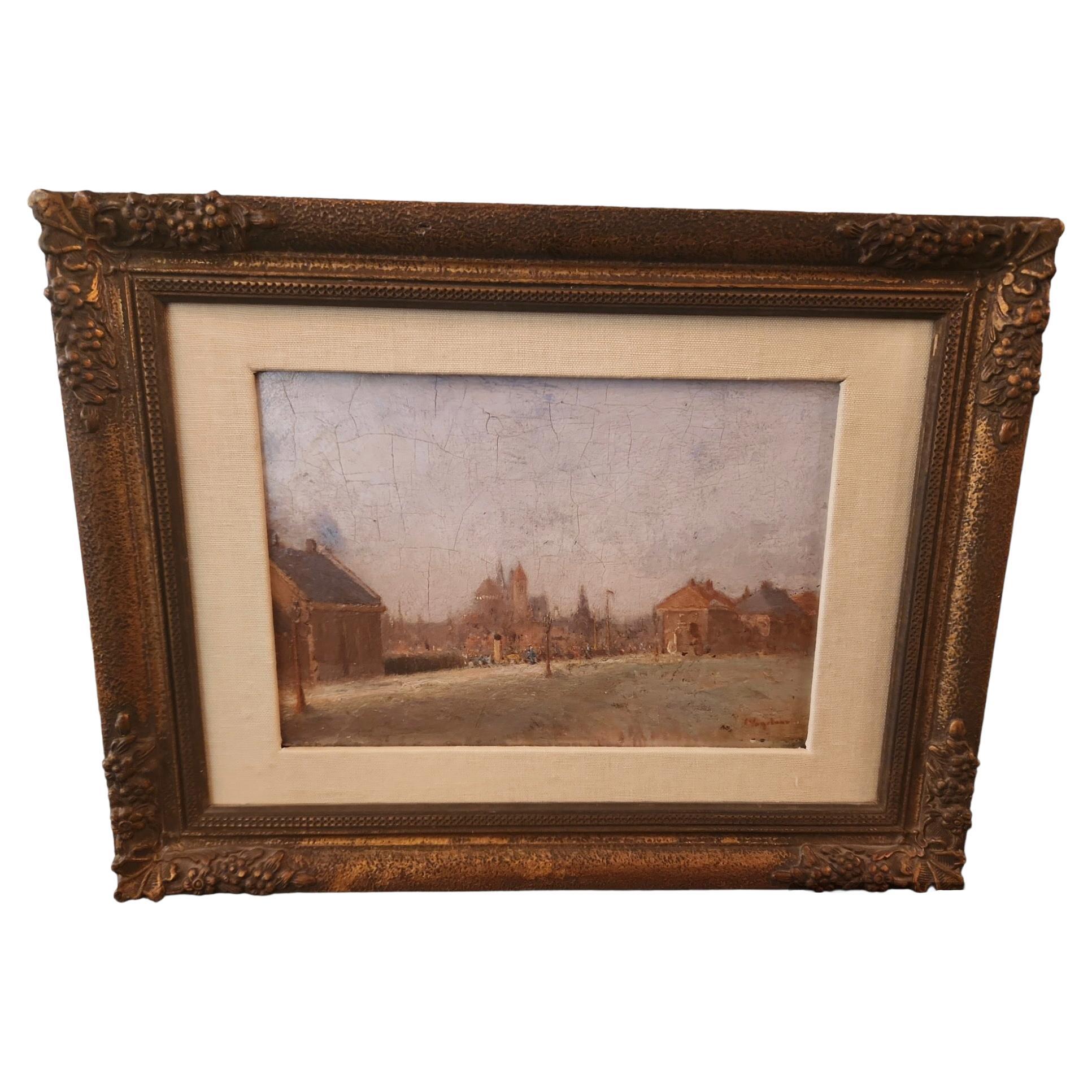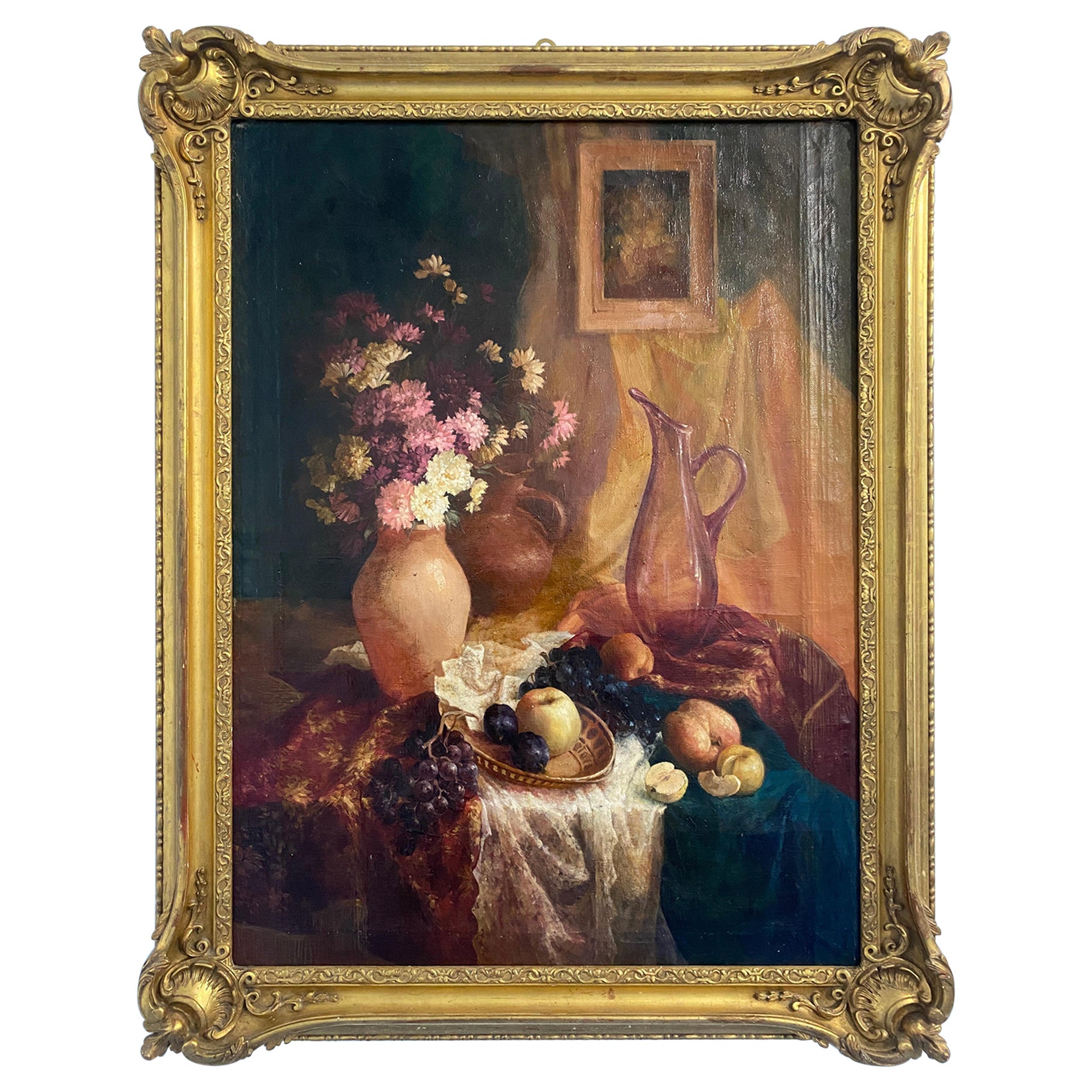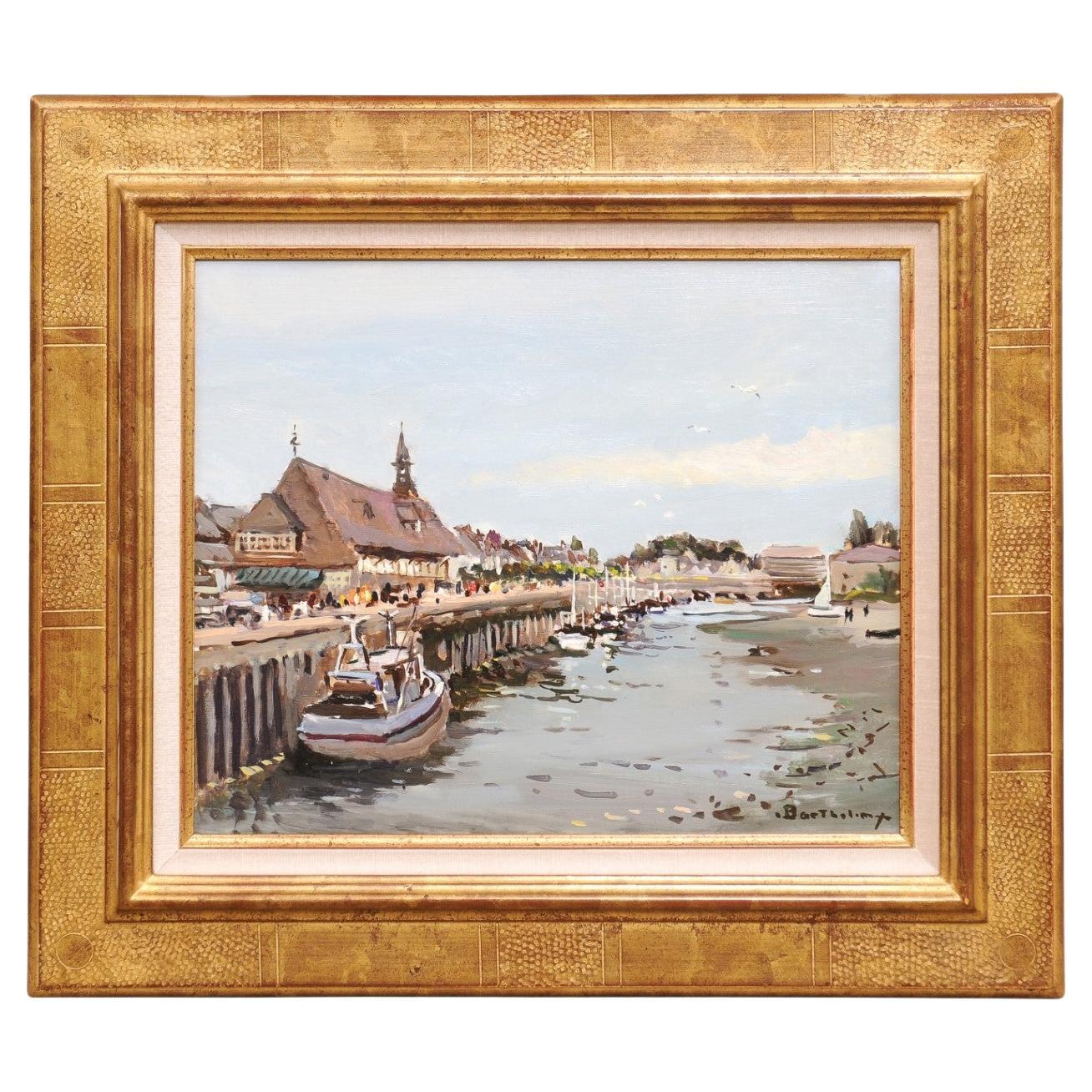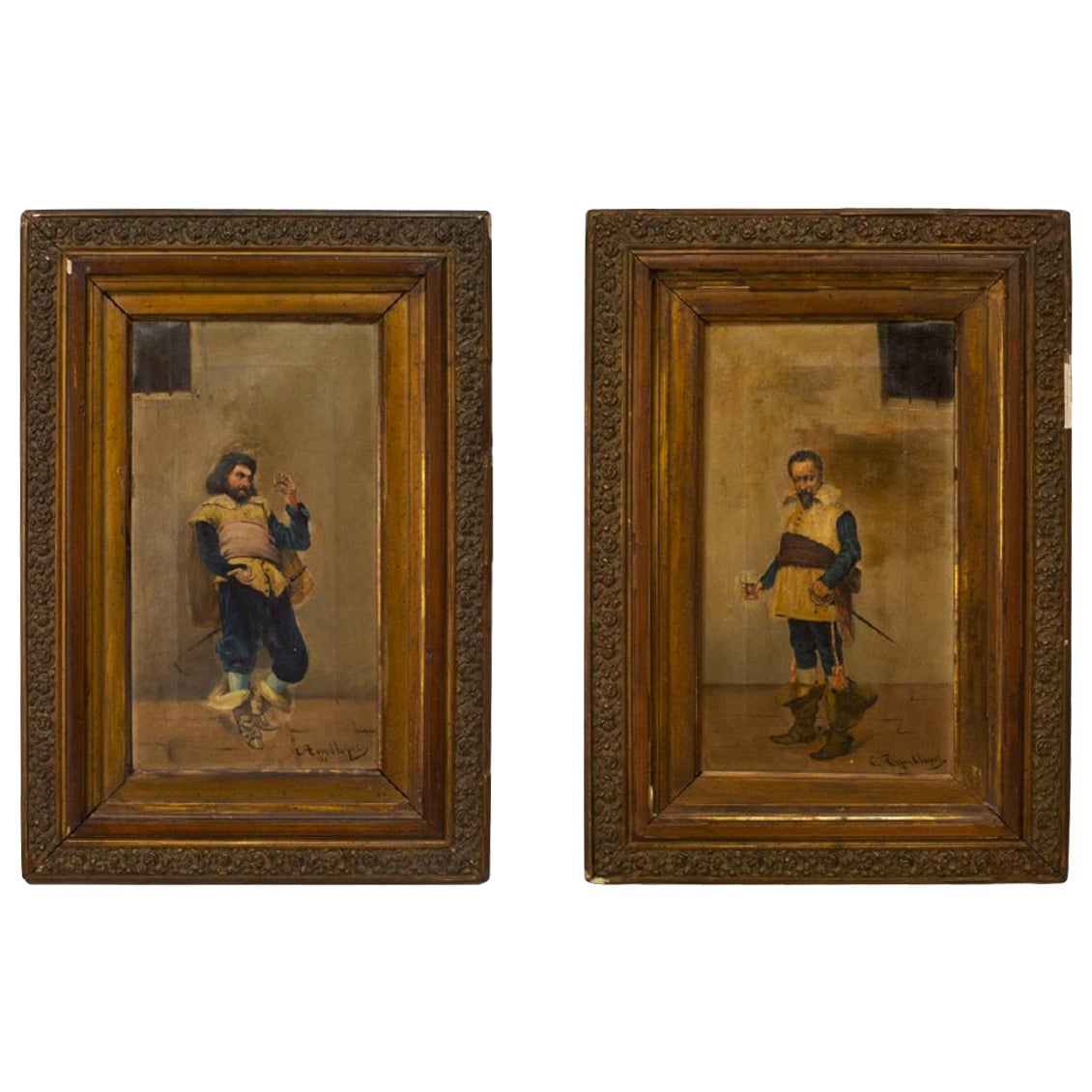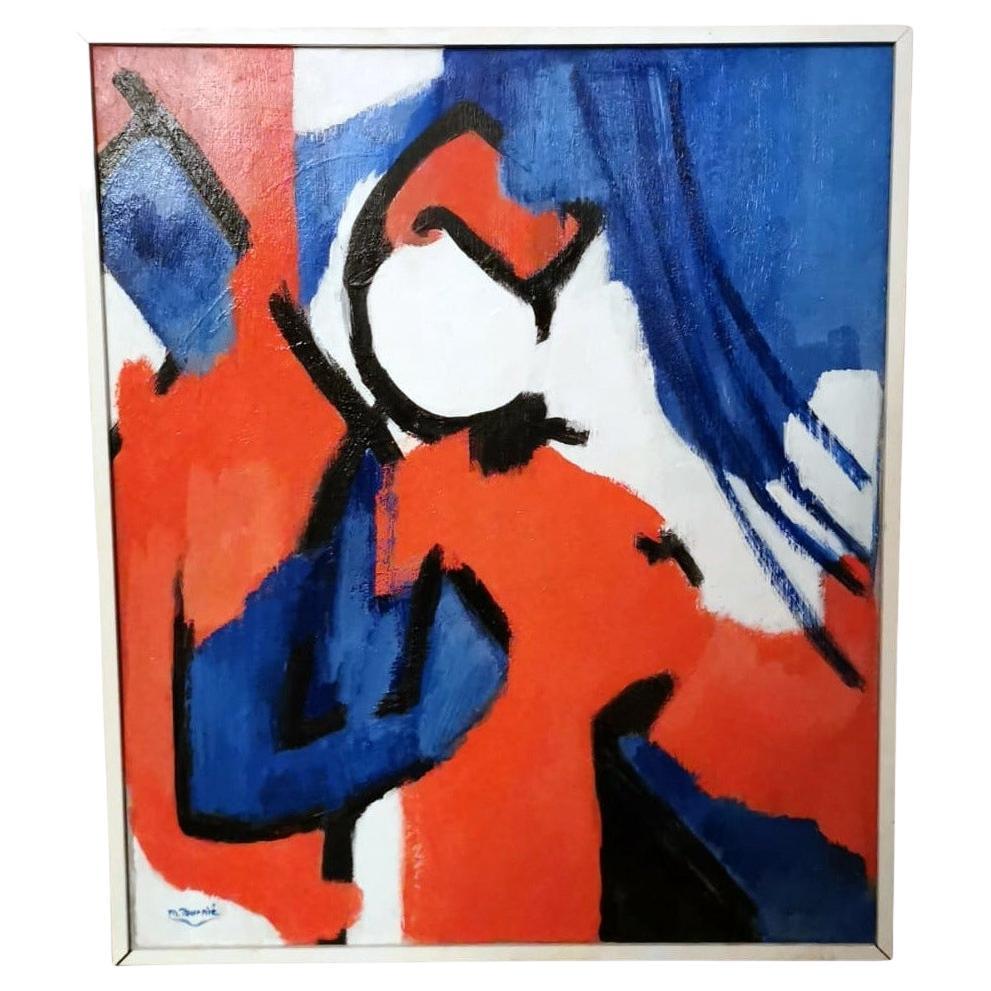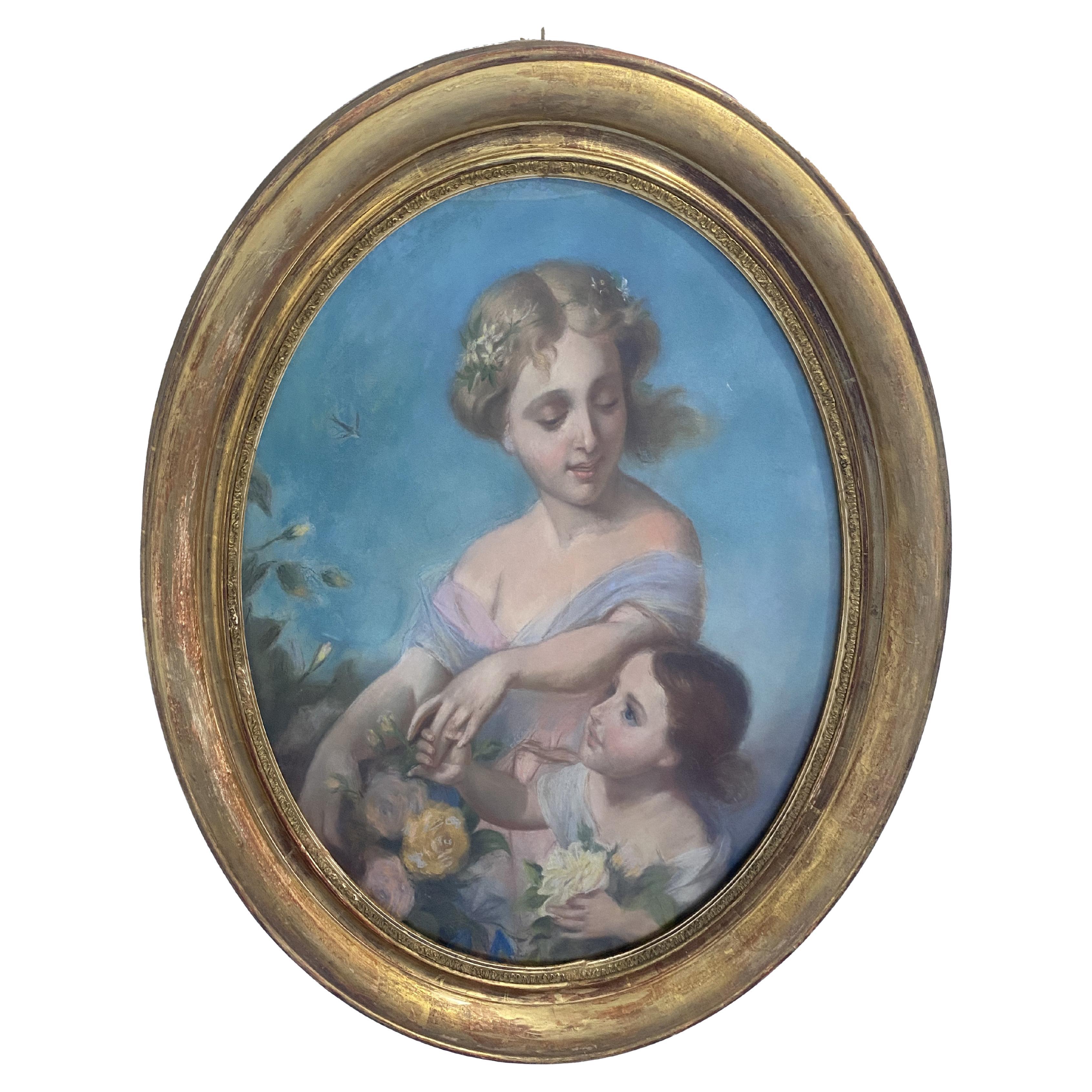Items Similar to French 1900s Oil Painting Depicting a Pointer Standing at the Edge of the Woods
Want more images or videos?
Request additional images or videos from the seller
1 of 12
French 1900s Oil Painting Depicting a Pointer Standing at the Edge of the Woods
About the Item
A French oil on canvas painting from the early 20th century depicting a pointer dog in the woods, in giltwood frame. Created in France during the Turn of the Century which saw the transition between the 19th to the 20th, this oil on canvas painting depicts a brown and white coated pointer, standing at the edge of the woods. The tail, ears and position of the head reveal that his attention is drawn to a scene invisible to us. Two birch trees on the left seem to be echoing his coat. The upper left section of the composition opens to the overcast sky. The warm palette is made of brown and yellow tones contrasted with green. Unsigned, the painting is set inside an elegant giltwood frame adorned with carved beads and gadroons, surrounding acanthus leaves and fluted motifs. With its warm colors and skillful depiction, this French oil on canvas dog painting circa 1900 will make for a wonderful addition to any home, placed above a side table, a commode or a buffet.
- Dimensions:Height: 30.5 in (77.47 cm)Width: 27 in (68.58 cm)Depth: 3 in (7.62 cm)
- Materials and Techniques:
- Place of Origin:
- Period:
- Date of Manufacture:circa 1900
- Condition:Wear consistent with age and use. This is an antique and having been around for a long time, it will show signs of wear. Antique pieces have very much sought-after character and associated flaws. Please review photos for condition & contact us with questions!
- Seller Location:Atlanta, GA
- Reference Number:
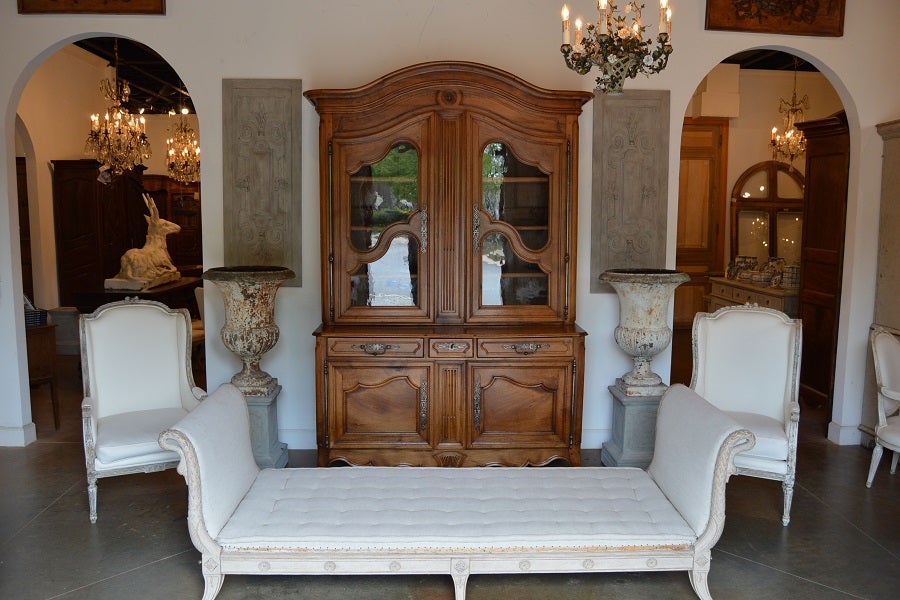
About the Seller
5.0
Platinum Seller
These expertly vetted sellers are 1stDibs' most experienced sellers and are rated highest by our customers.
Established in 1982
1stDibs seller since 2007
835 sales on 1stDibs
Typical response time: 1 hour
- ShippingRetrieving quote...Ships From: Atlanta, GA
- Return PolicyA return for this item may be initiated within 1 day of delivery.
More From This SellerView All
- French Framed Oil Painting Depicting the Harbor of Trouville, Signed BarthélémyLocated in Atlanta, GAA French framed oil on canvas harbor painting from the late 20th century, titled 'Le Port de Trouville sur Mer' by Gérard Barthélémy. Created during the last decade of the 20th centu...Category
Late 20th Century French Paintings
MaterialsCanvas, Wood
- French Framed Still-Life Oil Painting Depicting a Bouquet of Flowers, circa 1850Located in Atlanta, GAA French framed oil on canvas still-life painting from the mid-19th century, depicting a colorful bouquet of flowers in a vase, set in a carved giltwood frame. Born in France at the ...Category
Antique Mid-19th Century French Napoleon III Paintings
MaterialsCanvas, Giltwood, Paint
- French 19th Century Framed Oil On Panel Painting Depicting a Village by the SeaLocated in Atlanta, GAA French 19th century framed oil on panel painting depicting a scene of village life by the sea, under a cloudy sky. Exuding a tranquil ambiance with undertones of bustling daily lif...Category
Antique 19th Century French Paintings
MaterialsWood, Paint
- French 19th Century Oil Landscape Painting Depicting a Country Life SceneLocated in Atlanta, GAA French oil on canvas landscape painting from the 19th century, depicting a scene of everyday life in a village. Created in France during the 19th century, this horizontal format oi...Category
Antique 19th Century French Paintings
MaterialsCanvas, Giltwood, Paint
- French Impressionist Style 1950s Oil on Canvas Painting Depicting a Small ChurchLocated in Atlanta, GAA French Impressionist style framed oil on canvas painting from the mid 20th century, depicting a church in a village. Created in France during the midcentury period, this horizontal...Category
Mid-20th Century French Paintings
MaterialsCanvas, Wood
- French 19th Century Oil on Canvas Painting Depicting Roosters in a BarnyardLocated in Atlanta, GAA small French oil on canvas framed painting from the 19th century, depicting a rooster and chickens in a barnyard, signed Normand. Created in France during the 19th century, this fr...Category
Antique 19th Century French Paintings
MaterialsCanvas
You May Also Like
- 1900s Painting of a CityLocated in Los Angeles, CAThe canvas is 13.5" wide by 10.5" high. The painting is signed, but is illegible. Painted between 1900 and 1910. New linen liner.Category
Early 20th Century French Neoclassical Paintings
MaterialsCanvas, Wood, Paint
- Antique oil painting "Still Life," signed, France, early 1900sLocated in Traversetolo, ITSplendid oil painting "Still Life" executed in the early 1900s.The manner in which this still life was executed shows a pictorial conception devoted to a total realism that takes int...Category
Vintage 1910s French Other Paintings
MaterialsCanvas, Wood
- Pair of French Victorian Oil Paintings of Standing CavaliersLocated in New York, NYPair of French Victorian (19th Cent) oil on canvas paintings of standing cavaliers in gilt frames (sgnd: C. Fembleque).Category
Antique 19th Century French Victorian Paintings
MaterialsCanvas
- Antique French pastel painting "Mother with Child" from the early 1900sLocated in Traversetolo, ITOld French pastel painting "Mother with Child "from the early 1900s,the author demonstrates great skill in conveying the feeling of complacency of the maternal figure,not to mention ...Category
Antique Early 1900s French Art Nouveau Paintings
MaterialsWood, Paper
- French Symbolic Expressionism Oil Painting Depicting French RevolutionLocated in Prato, TuscanyWe kindly suggest that you read the entire description, as with it we try to give you detailed technical and historical information to ensure the authenticity of our objects. Painting oil painting on canvas is made with mixed technique brush and spatula; the author used traditional brushes for a first draft giving shape to the whole drawing with an expert, loose wrist play and with sure and decisive brushstrokes; the representation, in this case, is not a pure exercise of virtuosity, in fact, the author communicates us his intimate essence manifesting it through the language of colors, shapes, and composition. The artist finished his work with the technique of spatula painting, named after the protagonist's instrument, redistributing the colors densely and consistently, making the painting take on a special body and depth. The painting is signed but we are unable to give definite information about the author, however, we confirm its extraordinary aesthetic and engaging vividness; the painting was made in 1989 in the author's studio in Paris whose intentions were to celebrate the 200th anniversary of the French Revolution (1789). The painter was inspired by both French Expressionism and Symbolism; Expressionism exalts the emotional value of art; it is the artist's desire to communicate inner feelings, while with Symbolism, painters tend to go beyond the objective representation of reality to focus instead on the subjective vision, in which inner feelings, emotions, and experiences are evoked above all. Our painting is overflowing with the symbolism of the French Revolution; it is practically an evocative essence of it. This important and overwhelming historical event is powerfully present in the soul of the artist who wanted to overbearingly communicate to us his deepest emotions by transposing them entirely in the painting with strong and vivid colors, he did not want to simply allude or hint but to express, indeed "shout" his own deep interiority. In his intentions, the painting schematically and symbolically represents a standard-bearer of the French Revolution wearing the classic "Phrygian" hat. The author used only the three colors white, red, and blue that characterized the flags of the French Revolution; they were the new banners, which opposed the traditional emblem of the monarchy, the lilies on a white field. Three were the colors because three were the goals of the Revolution: liberty, equality, and fraternity, and they represented the three classes into which French society of the time was divided: the clergy (blue), the nobility (white), and the third state (red). The "Phrygian" cap (Latin for pileus) painted in red in the painting also has a high symbolic value, In Roman times it was worn by the " freedmen" to show that they were now freed slaves but in the French Revolution it became the very symbol of Liberty; a similar cap was worn by the freed Marseilles convicts in 1792, and was the symbol of the Jacobins during the French Revolution. Due to this fact, in addition to its historical meaning of freedom, it was later adopted as a symbol of the revolution itself, a symbol immortalized on the "Marianne," the very emblem of France, in Eugène Delacroix's famous painting "Liberty Leading the People...Category
Late 20th Century French Modern Paintings
MaterialsCanvas, Wood
- " At The Races " Original Oil PaintingLocated in West Palm Beach, FLOriginal oil painting of a horse race.Category
20th Century Unknown Paintings
MaterialsCanvas, Paint
Recently Viewed
View AllMore Ways To Browse
Antique White Buffet
Antique Wood Saw
Green Painted Commode
Antique French Buffet Table
French Commode Circa 1900
Antique Table Saw Table Saws
Antique Table Saw
Antique Table Saws
Antique Yellow Wood Table
White Painted Buffet
Transitional Buffet
French Transitional Commode
Antique Dog Table
Commode With Paintings
Ear Warmers
Yellow Commode
French Coat Tree
Antique Furniture Buffets Side Tables
